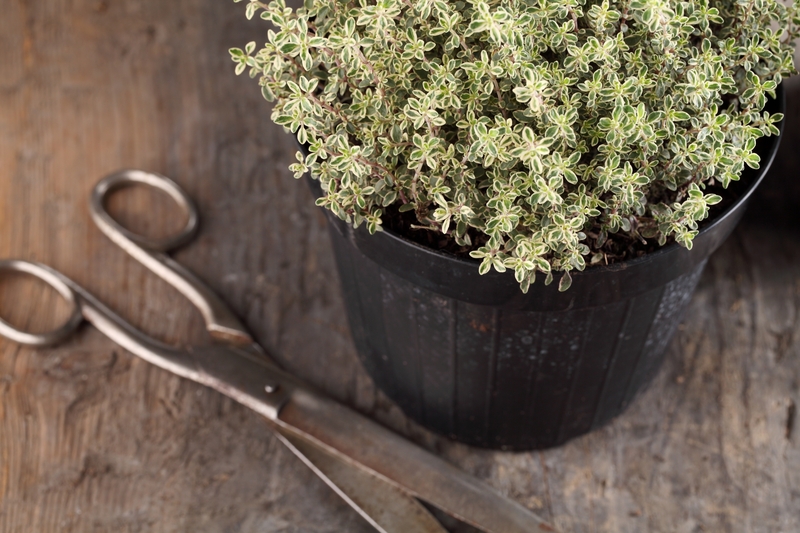Preserve Your Lawn's Beauty by Preventing Drought Stress During Hot Months
Is your lawn turning brown and patchy every summer? Are you looking for proven ways to defend your grass against the harsh effects of scorching weather? In this comprehensive guide, we share everything you need to know about preventing drought stress for your lawn during hot months. Discover effective strategies, smart lawn care routines, and long-term solutions to maintain your lawn's vibrant appearance even in the most challenging conditions.
Understanding Drought Stress: What Happens to Your Lawn?
Drought stress occurs when your grass loses more water than it receives, particularly during periods of high heat and minimal rainfall. The symptoms are easy to spot: blades turning brown, slow growth, and an overall dry, brittle appearance. When drought stress sets in, your lawn doesn't just look bad--it becomes more vulnerable to pests, weeds, and diseases.
- Loss of color and vibrancy
- Soil cracking and hardening
- Thin, spindly growth
- Visible footprints or mower tracks
If you want to preserve your lawn's beauty during the harshest months, proactive prevention is key.

Why Drought Stress Is Worse in Hot Months
Summer heat amplifies the risk of drought stress because of:
- Higher evapotranspiration: Water evaporates faster from the soil and plant surfaces.
- Reduced rainfall: Many regions experience less precipitation during peak summer.
- Increased lawn usage: Foot traffic, kids, and pets can compact the soil, making it harder for water to penetrate.
Awareness is the first step. The next is establishing solid, actionable routines to protect your grass from drought conditions.
Top Strategies to Prevent Drought Stress and Maintain a Lush Lawn
Let's look at the most effective steps homeowners can take to shield their lawns from the ravages of summer drought.
1. Choose Drought-Resistant Grass Varieties
Some types of turfgrass are naturally better equipped to handle dry, hot climates. If you're establishing a new lawn or overseeding, consider:
- Bermuda grass: Thrives in hot weather and requires less water.
- Zoysia grass: Dense, slow-growing, and drought-tolerant.
- Tall fescue: Deep roots make it resilient during dry spells.
- Buffalo grass: Extremely low watering needs and handles heat well.
Pro tip: Consult a local lawn care expert or garden center for recommendations based on your region's climate.
2. Water Smartly and Efficiently
Watering is crucial, but technique and timing matter as much as quantity. Follow these best practices to minimize drought stress on your lawn:
- Early morning watering: The best time is between 4-9 a.m. when temperatures are cooler and winds are low, reducing evaporation.
- Deep, infrequent watering: Aim for 1-1.5 inches per week (including rainfall). Water deeply to encourage root growth, rather than shallow daily watering.
- Avoid night watering: Nighttime irrigation encourages disease and fungal growth.
- Use a rain sensor or smart controller: Automated watering based on soil moisture and weather data ensures efficiency.
Remember: Overwatering can be just as harmful as underwatering!
3. Mow Correctly to Defend Against Drought
Proper mowing helps your lawn withstand summer stress and retain moisture:
- Set mower blades high: Cutting no more than one-third of the grass blade at a time keeps roots shaded and reduces water loss.
- Leave grass clippings: Mulching clippings returns vital nutrients and conserves soil moisture.
- Keep blades sharp: Dull blades tear rather than cut, making grass more susceptible to stress.
A taller lawn shades the soil, creates deeper roots, and naturally fights drought stress!
4. Feed and Fertilize Wisely
Healthy, well-fed grass has the stamina to survive the most intense heat and dry periods. However, over-fertilizing during hot months can actually make drought stress worse. Here's how to support your lawn's health without risking damage:
- Fertilize in spring and fall: These are the best times to promote robust root growth.
- Avoid heavy feeding in midsummer: Excess nitrogen encourages shallow growth that can't survive drought.
- Use slow-release fertilizers: They provide steady nutrients without spiking growth.
- Incorporate organic matter: Compost or natural soil amendments enrich soil and improve water retention.
5. Maintain Healthy Soil Structure
Healthy soil is the foundation of a resilient, beautiful lawn. Summer's heat and regular traffic tend to compact soil, making it less able to absorb water. Take steps to keep soil open and absorbent:
- Aerate yearly: Use a core aerator to reduce compaction and boost root penetration.
- Topdress with compost: Adding a thin layer of compost once or twice a year improves moisture retention and soil fertility.
- Check pH and nutrients: Test your soil and correct deficiencies as needed for optimal grass health.
Loose, well-drained, nutrient-rich soil helps prevent drought stress even on the hottest days.
Extra Practices for Drought-Resistant Lawns
Beyond the lawn basics, go the extra mile with these advanced approaches to avoid drought stress on your grass:
Mulch Flower Beds and Plant Borders
- Mulching around trees, shrubs, and borders conserves soil moisture and reduces competition for water with your turfgrass.
Install Drip Irrigation for Targeted Watering
- Drip systems are more efficient than sprinklers, reducing evaporation and ensuring water goes straight to the roots of your landscaping and even edges of the lawn.
Practice Lawn Cycling or Managed Dormancy
- Some lawns benefit from "cycling"--allowing grass to go dormant during extreme drought, then reviving it when water is available. This technique works best with certain grass types. Consult local experts first.
Keep Traffic Off During Stress
- Limit backyard play or heavy movement when your lawn is already showing signs of drought. Compacted, stressed turf recovers much more slowly.
Repair Damaged Areas Promptly
- Reseed, re-sod, or patch bare spots quickly so weeds can't invade. Use drought-tolerant seed blends for best results.
Common Myths about Drought Stress Prevention
Myth 1: Watering daily is best for your grass.
Fact: Shallow, daily watering encourages weak roots and greater vulnerability. Aim for deeper, less frequent soaking.
Myth 2: Fertilize often in summer to help recovery.
Fact: Over-fertilizing in high heat can burn and damage your turf--always follow recommended seasonal schedules.
Myth 3: Letting grass go brown means it's dead.
Fact: Most grass species will naturally go dormant (not dead) during extreme drought and heat. With the right care, they bounce back when cooler, wetter weather arrives.
Signs Your Lawn is Suffering From Drought Stress
- Discoloration: Grass turns bluish-gray or brown and loses its vibrant green color.
- Wilting: Blades curl, wilt, or appear limp and lifeless.
- Footprints linger: Imprints from walking or mowing don't quickly disappear, indicating loss of turgor pressure.
- Thinning and bare spots: Areas of the lawn become sparse or develop patches of bare soil.
If you notice these signs early, you can take swift action to minimize long-term damage.
Regional Considerations: Adjusting for Climate
Every climate presents unique lawn care challenges, especially during the hot months.
- In dry Western states: Native grasses and xeriscaping may be more sustainable than traditional turf.
- Humid Southern regions: Choose disease-resistant grass types and watch for fungal stress as well as drought.
- Cooler Northern areas: Drought stress may be brief but can hit hard. Timely watering, even in short spells of heat, is crucial.
Local university extension offices or reputable nurseries are valuable resources for region-specific advice.
Conserving Water During Summer Lawn Care
With water conservation becoming more important than ever, you don't have to sacrifice your lawn's health. Try these tips for a green lawn while remaining eco-friendly:
- Install a rain barrel: Collect and use natural rainfall for irrigation needs.
- Group thirsty plants together: This prevents overwatering less needy areas of the yard.
- Maintain equipment: Fix leaks in hoses, pipes, and sprinkler heads to prevent waste.
- Upgrade to water-efficient systems: Use smart tech and low-flow sprinkler heads.
Every drop counts--your lawn and the environment will thank you!

Frequently Asked Questions About Preventing Drought Stress on Your Lawn
How can I tell if my grass is dormant or dead?
Dormant grass is usually straw-colored but will green up after rainfall or watering returns. Dead grass, on the other hand, is brittle, pulls up easily, and won't recover.
Should I stop mowing during extreme drought?
Yes--if your lawn stops growing and looks stressed, suspend mowing until recovery. When you do mow again, cut less than normal and keep blades high.
How much should I water newly planted grass during a drought?
New lawns need more frequent watering (sometimes daily) for the first few weeks, but always aim for deep, thorough soaking rather than just moistening the surface.
Can I revive a badly drought-stressed lawn?
With proper watering, aeration, and care, many lawns can bounce back. Severely damaged areas may require reseeding or sodding, especially if left neglected too long.
Conclusion: Enjoy a Resilient, Beautiful Lawn in Every Season
Protecting your lawn from drought stress during the hot months is completely achievable with proactive planning and mindful care. By following these techniques--selecting the right grass, watering properly, mowing wisely, and maintaining soil health--you can preserve your lawn's beauty even during the harshest periods.
Start today and transform your lawn into a lush, green oasis that stands strong against drought and heat. Your efforts will be rewarded with a vibrant, resilient landscape your neighbors will admire all year long.
Ready for more helpful lawn care tips? Be sure to bookmark this guide and share it with friends and family who want to keep their grass green and healthy, no matter how hot the weather gets!